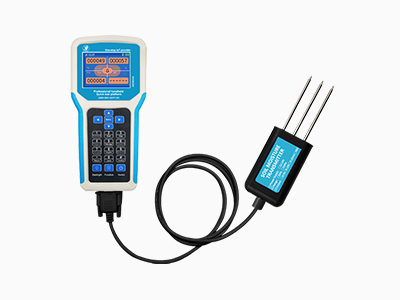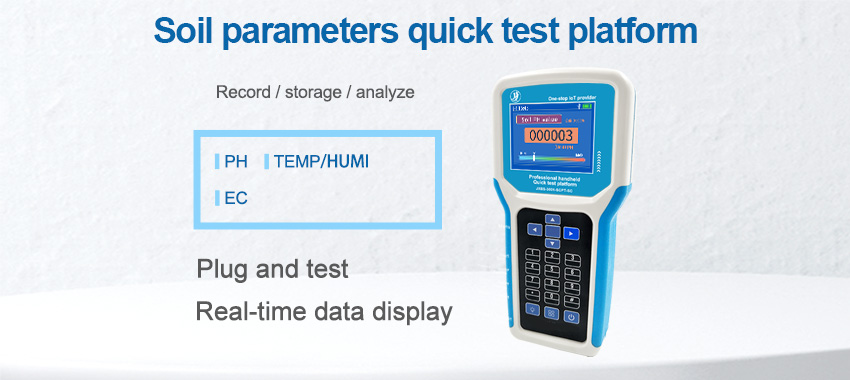Agriculture is the backbone of our global food production system, and ensuring optimal soil conditions is crucial for maximizing crop growth and productivity. Traditional methods of soil monitoring often rely on manual sampling and laboratory analysis, which can be time-consuming and provide limited insights into real-time soil dynamics. However, with the advent of soil sensor technology, farmers now have access to precise and continuous monitoring of soil conditions. This article explores the power of soil sensors in real-time monitoring of soil conditions, their working principles, and their potential applications in modern agriculture.

The Benefits of Real-Time Monitoring
Real-time monitoring of soil conditions using soil sensors offers several advantages over traditional methods:
Accurate and Precise Data: Soil sensors provide accurate and precise measurements of key soil parameters, such as moisture content, temperature, pH level, and nutrient concentrations. These sensors capture data at regular intervals, allowing farmers to assess the dynamic nature of soil conditions and make informed decisions for optimal crop growth.
Timely Intervention: By providing real-time data, soil sensors enable farmers to detect changes in soil conditions promptly. This allows for timely intervention in cases of water stress, nutrient deficiencies, or soil-borne diseases, reducing the risk of crop damage and losses.
Resource Optimization: Real-time monitoring helps optimize resource use, such as water and fertilizers. By monitoring soil moisture levels, farmers can apply irrigation precisely when needed, avoiding water wastage and achieving efficient water management. Similarly, by continuously monitoring nutrient levels, farmers can tailor fertilizer application to meet crop requirements, reducing excess use and minimizing nutrient runoff.
Working Principles of Soil Sensors
Soil sensors rely on various principles to measure different soil parameters. The three common types of soil sensors are moisture sensors, temperature sensors, and nutrient sensors.
Moisture Sensors: Moisture sensors measure the volumetric water content (VWC) in the soil. These sensors use different techniques, such as capacitance-based measurement or time-domain reflectometry (TDR), to assess soil moisture levels. Capacitance-based sensors measure the dielectric constant of the soil, which correlates with water content. TDR sensors use electromagnetic pulses to determine soil moisture levels based on the reflection time of the pulses.
Temperature Sensors: Temperature sensors monitor soil temperature at various depths. They typically consist of thermistors or thermocouples embedded in the soil. These sensors provide valuable data for understanding temperature variations in the root zone, helping farmers make informed decisions about planting dates, irrigation timing, and nutrient availability.
Nutrient Sensors: Nutrient sensors measure the concentration of essential nutrients in the soil, such as nitrogen (N), phosphorus (P), and potassium (K). These sensors employ different techniques, including ion-selective electrodes, colorimetry, or spectroscopy, to quantify nutrient concentrations. Nutrient sensors offer insights into nutrient availability in the soil, allowing farmers to optimize fertilizer application and minimize nutrient imbalances.
Potential Applications of Soil Sensor Technology
Soil sensor technology has a wide range of applications in modern agriculture:
Precision Irrigation: Real-time soil moisture data from sensors can guide precise irrigation practices. By monitoring moisture levels at different soil depths, farmers can optimize irrigation scheduling and avoid under or over-irrigation. This ensures that plants receive adequate water while conserving water resources.
Nutrient Management: Continuous monitoring of nutrient levels using soil sensors helps farmers optimize fertilizer application. By assessing soil nutrient status, farmers can adjust fertilizer rates and timings, ensuring efficient nutrient uptake by crops and reducing nutrient losses to the environment.
Disease Prevention: Soil sensors can aid in disease prevention by monitoring soil conditions favorable for pathogen development. By detecting changes in soil moisture and temperature, farmers can implement preventive measures promptly, such as adjusting irrigation practices or applying appropriate fungicides, mitigating the risk of crop diseases.

Decision Support Systems: Real-time soil sensor data can be integrated with other agricultural data, such as weather forecasts and crop models, to develop decision support systems. These systems provide farmers with recommendations on irrigation, fertilizer application, and pest management, based on real-time soil conditions and crop requirements.
Conclusion
Real-time monitoring of soil conditions using soil sensors has revolutionized modern agriculture. The power of soil sensors lies in their ability to provide a
